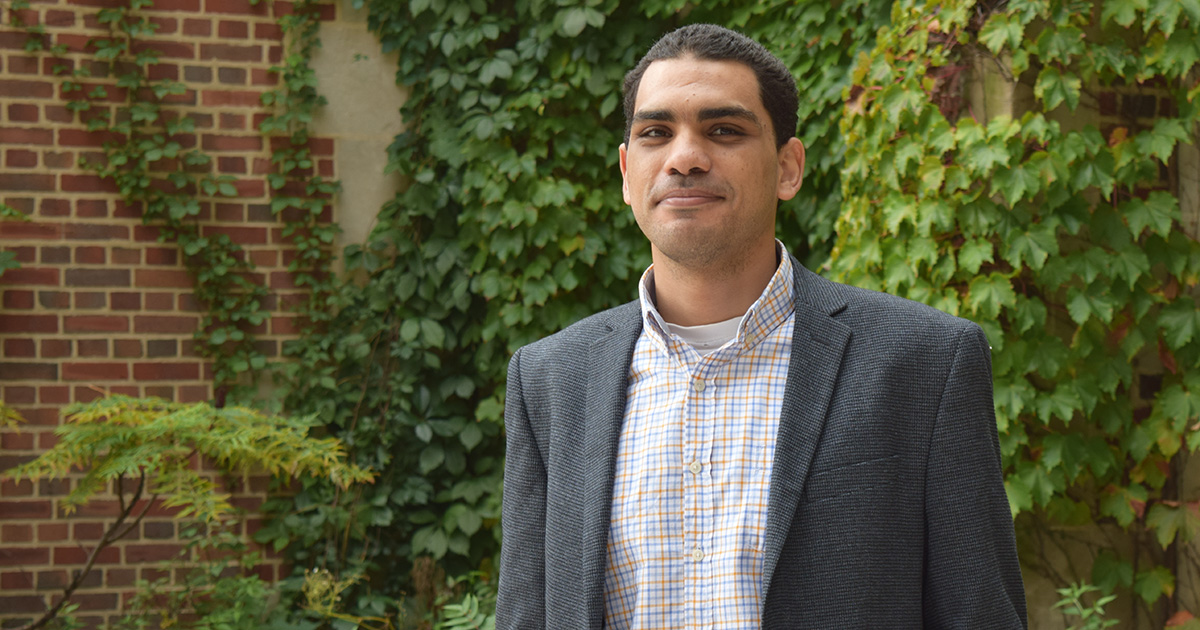The Future of Sustainability is in the Hands of Entrepreneurs

Where would environmental initiatives be without entrepreneurs?
While debates rage on about whether environmental issues should be heavily invested in, sustainability entrepreneurs around the world are making heavy strides toward a greener way of life.
Does Geographic Location Impact a City’s Sustainable Practices?
“What we see in the papers is that climate change is this big, polarizing political thing,” said Siddharth Vedula, Babson assistant professor and environmental researcher. “Which makes it harder for us to come up with tangible solutions.”
Vedula, who grew up in India, went to high school in the Middle East, attended college in Toronto, and finished his master’s degree in biomedical engineering in Montreal before moving to the United States for his PhD in business.
“Ever since I was a kid, I was interested in geography—I mean, I’ve lived in so many different places around the world,” said Vedula. “I found it interesting to see how people see entrepreneurship differently across cultures.”
When it was time to choose a dissertation topic in his doctorate program at the University of Boulder, Vedula took his interest in geography and applied it to the startup world. “Everyone was into the tech startups in Colorado, and a lot of the entrepreneurs I was studying in my program had their hands in environmental issues,” said Vedula.
That sparked a nine-year research project, conducted by Vedula and two other professors, which was recently published by The Academy of Management Journal. Together, they looked at the rates of Leadership in Energy and Environmental Design (LEED) buildings being built in different cities across the United States. LEED is the most widely used green building rating system in the world; it’s available for “virtually all” building, community, and home project types according to the U.S. Green Building Council, (USGBC), a nonprofit that created the LEED standard in the late ’90s.
“Buildings are the primary contributor to greenhouse gas emissions—even more than cars,” explained Vedula. “And, there’s a clear difference in markets. There have been some places where LEED has been developed rapidly and in others, it hasn’t.”
Vedula and his team wanted to understand what factors contributed to the adoption rate of environmentally friendlier buildings, which is the basis of their research project. In the same vein, what cities are more conducive for starting sustainability research?
“Agents” of Sustainability
Their research followed four sustainability “actors.” The first being was USGBC. The second, LEED APs, advanced professionals who serve as evangelists and consultants on sustainability projects. The third was government policies or initiatives (i.e., cities that have put out mandates to build green). And, the fourth was environmental entrepreneurs—those creating products and services needed to build environmental buildings, like more water-efficient toilets, window paning, and energy saving technologies.
“We wanted to understand under what conditions each of these actors thrive in,” said Vedula. “And, discover if the conditions of the cities impacted how effective they are.”
A Tale of Two Cities: Pro-market vs. Pro-community
For the sake of the study, cities were broken into two categories: pro-market and pro-community. Pro-market cities (majority of them being in the southern hemisphere) are market-driven, and seen to be more skeptical of climate change. Pro-community cities (such as Boulder, Colorado or Portland, Oregan) are labeled as more “green” or civic minded.
Vedula and his research partners created criteria to measure whether a city was pro-community or pro-market. For example, pro-community cities generally have a lot of environmental groups, have citizens who vote for environmental legislation, have open-space parks, etc.
What they found across the two categories was a riveting case for entrepreneurs everywhere.
While LEED APs, USGBC, and other government initiatives were more effective in market-driven cities, Vedula’s team found those agents did not make much of an impact in community-driven cities. “What does this mean?” asked Vedula. “Don’t waste your time or money incentivizing in places where people are going to do it anyway!”
Entrepreneurs Are Finding Common Ground Across Cultures
In their research, the professors found that entrepreneurs are effective in both pro-market and pro-community regions, statistically speaking.
“Entrepreneurs can bridge that climate change divide,” said Vedula. “Entrepreneurs seem to be equally well-received by audiences while the other actors seem to be effective only in one or the other.”
What does that mean for the future of sustainability and other “green” practices?
Well, it’s an important factor for policymakers to note. “If I were a local policymaker and I had $1,000, I’d rather use that money to invest in grassroots places who can rally the community,” said Vedula. “That’s a long-term way of thinking.”
It’s also key strategic information for current and aspiring sustainability entrepreneurs. It’s important for these business builders to be aware of the values and ideology of their geographical location. “If you’re only concerned about the material resources—investors, friends, etc.—you’re missing a big piece of the puzzle,” said Vedula.
Starting a sustainable-focused business in a pro-market region isn’t impossible for entrepreneurs. In fact, they have the potential for the most long-term success according to Vedula’s research. But, it’s important to keep the region’s mentality in mind before launching your green venture.
Location is Everything: Sustainability Entrepreneurs in the Northeast
Babson graduate Eric Hudson MBA’92 started his company, Preserve, in 1996. After years of working in the finance and consulting worlds, Hudson decided to apply his appreciation for the natural world to the business world. In the beginning, he worked with dentists, scientists, and engineers to design the Preserve Toothbrush—made completely out of recycled and environmental-friendly material. Now more than 20 years later, Preserve sells other stylish, sustainable, functional products such as razors, tableware, kitchenware, and more.
“I started Preserve to meet what I saw was a need in the marketplace and the recycling industry,” said Hudson. “There was a lot of recycling happening but no evidence that those resources were going toward creating new products.”
Hudson says he wanted to start a company he was excited to get up and go to work to every day—and something that had less of a negative impact on the environment.
“We had really good support and facilitation in Massachusetts,” said Hudson, who started Preserve in Cambridge and was a volunteer at the Recycling Committee of Cambridge at the time. “The city of Boston and the state of Massachusetts nurtured me through the process.” Hudson also mentioned there were a few organizations that helped get them state grants and were intentional about investing in green businesses to help develop products in that space.
But, that doesn’t mean it was all a walk in the park. Hudson was met with some conceptual challenges at the time, along with the standard operational obstacles. “We were one of the first frontiers in this space, and saying to a manufacturing partner that you’re going to use recycled materials was a red flag in 1997,” said Hudson. “We were always bucking against the trend, needing to constantly affirm each other that we’re doing the right thing and that it made sense.”
Hudson and his Preserve team didn’t stop at just creating new products. They also found a way for consumers to recycle Preserve products at the end of their useful life—partnering with stores such as Whole Foods to introduce their “Gimme 5” recycling program. The “Gimme 5” bins can be found at more than 250 locations across the country.
“Today, manufacturers want to learn more about this. People seek us out now to get help or insight in this space,” said Hudson. “The recycling industry has evolved a lot and there is a disruption happening every day to adjust to what’s acceptable in a curbside bin.”
A Word of Advice for Aspiring Sustainability Entrepreneurs
As we learned from Vedula’s research, entrepreneurs have what it takes to cross geographical ideologies on behalf of sustainability and environmental progress. When asked if they had any advice for future entrepreneurs in this space, Vedula and Hudson both had encouraging words for their fellow “green fighters.”
“First, I’d like to say thank you. We need more entrepreneurs in this space,” said Hudson. “I wouldn’t worry about all the action going on in the space. [For] every product that doesn’t have a green solution … it needs to happen. There’s so many places to play, and it’s not too late to get in the game.”
“I’d spend a lot of time embedding myself in the community and understanding how it could be mutually helpful,” said Vedula. “Position yourself to the culture in the region—how the community perceives environmental issues and those who are working toward a solution.”
If you’d like to hear more about Siddharth Vedula’s research, you can listen to his “Academic Minute” on NPR. For more information about Eric Hudson and Preserve, go to www.preserveproducts.com
Posted in Insights






